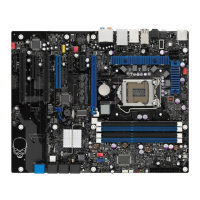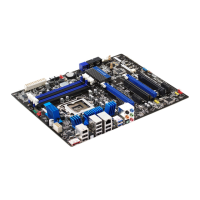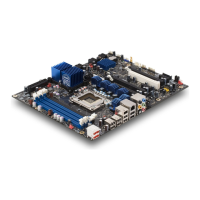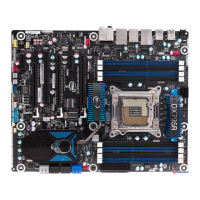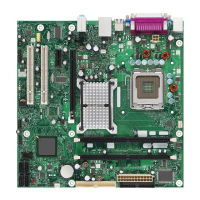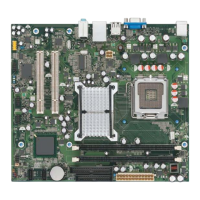Installing and Replacing Desktop Board Components
49
S/PDIF Header
Figure 27, A shows the location of the S/PDIF output header. Table 4 shows the pin
assignments and signal names for the S/PDIF connector.
Table 4. S/PDIF Header Signal Names
Pin Description
1 Ground
2 S/PDIF Out
3 Key (no pin)
4 +5 VDC
Front Panel Intel HD Audio Header
Figure 27, B shows the location of the front panel Intel HD Audio header. Table 5
shows the pin assignments and signal names for the front panel Intel HD Audio
header.
Table 5. Front Panel Intel HD Audio Header Signal Names
Pin Signal Name Pin Signal Name
1 PORT 1L 2 GND
3 PORT 1R 4 PRESENCE#
5 PORT 2R 6 SENSE1_RETURN
7 SENSE_SEND 8 KEY (no pin)
9 PORT 2L 10 SENSE2_RETURN
Consumer IR (CIR) Headers
The Desktop Board has two CIR headers: the input or receiver header (Figure 27, C)
and the output or emitter header (Figure 27, D). The receiver header consists of a
f
iltered translated infrared input compliant with Microsoft CIR specifications and a
“learning” infrared input. The learning input is a high-pass input which the computer
can use to “learn” to speak the infrared communication language of other user
remotes. The emitter header consists of two output ports which the computer can use
to emulate “learned” infrared commands in order to control external electronic
hardware.
NOTE
The Consumer IR option must be enabled in the system BIOS before it can
function. Press <F2> at boot to enter the system BIOS, and go to Advanced >
Peripheral Configuration > Enhanced Consumer IR, and set this option to
Enabled.

